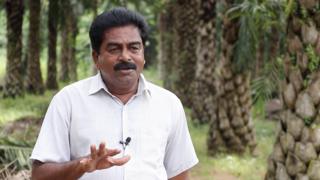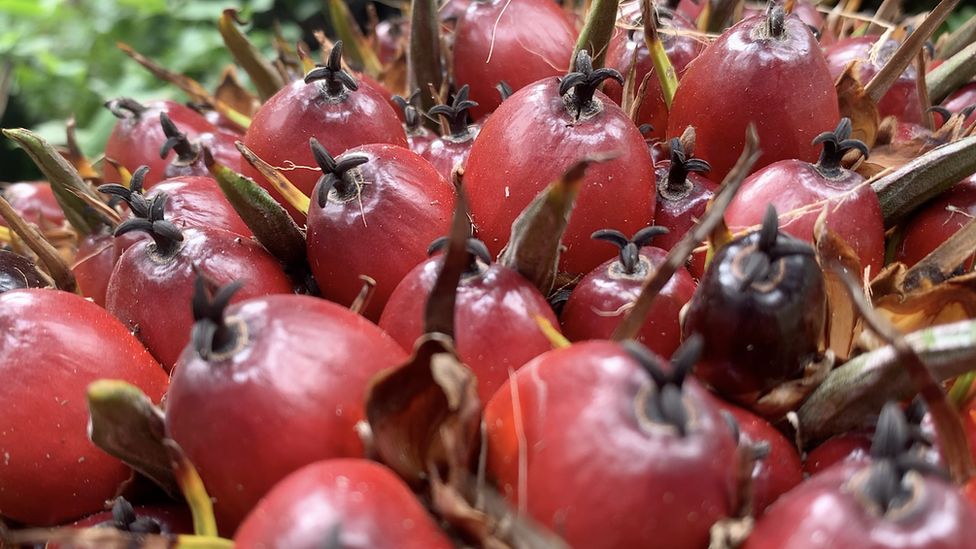
An 80km (49.7mile) road in Khammam district of the southern Indian state of Telangana is dotted with palm oil plantations on both sides.
Nagarjuna is among several farmers here who have been planting saplings of the oil palm tree in their fields this season.
The 50-year-old had suffered huge losses last year from rice cultivation on his four-acre (1.4-hectare) farm. He hopes that oil palm will help him return to profit. He says at least 50 other farmers in his village have made the same switch recently.
They are part of a growing number of farmers who are joining the state’s ambitious plan to become India’s palm oil hub. Since 2014, the land under palm oil cultivation here has grown from 34,000 acres to 72,000 acres in 2022.
The farmers are inspired by the huge profits made by plantation owners like Narayana Rao. Mr Rao, who is from the neighbouring Andhra Pradesh state, began cultivating oil palm eight years ago on his 30-acre (12.14-hectare) field in Khammam and says he has made a profit of more than 4m rupees ($48,705; £43,802).
“The lifespan of an oil palm crop is roughly 30 years. I am 72. I don’t think I’ll uproot these plants in my lifetime,” he says.
The oil palm is considered a “wonder crop” and is used in nearly every product of daily use – from food items like chocolates, ice-cream, bread and butter to cosmetics. It is also used as a biofuel component in diesel and petrol and has a variety of industrial applications.
In India, it accounts for 60% of the cooking oil market. The country produces just 2.7% of its needs, less than 300,000 metric tons of palm oil, and .imports 90% of its requirement – about 10 million metric tons – from Indonesia and Malaysia.
The Telangana government under Chief Minister K Chandrashekhar Rao has been promoting the crop by offering generous subsidies to farmers – the state has allocated 10bn rupees this year alone to encourage its cultivation.
The state plans to grow the area under oil palm cultivation by another two million acres and the number of farmers from 6,500 to 35,000 in the next four years.
Director of state’s horticulture department Venkat Reddy said earlier this year that Telangana would then become “the fifth largest oil palm cultivator [in the world]”.
“Our aim is to be the state that can supply enough palm oil so that imports from Malaysia and Indonesia are reduced by 30-40%.”
Analysts say this could benefit millions of households and also reduce the country’s dependence on oil imports to meet domestic requirements.
But environmental experts are sceptical. The crop is considered a major driver of deforestation. Globally, almost all oil palm is grown on lands that were once biodiverse tropical forests, studies have shown.
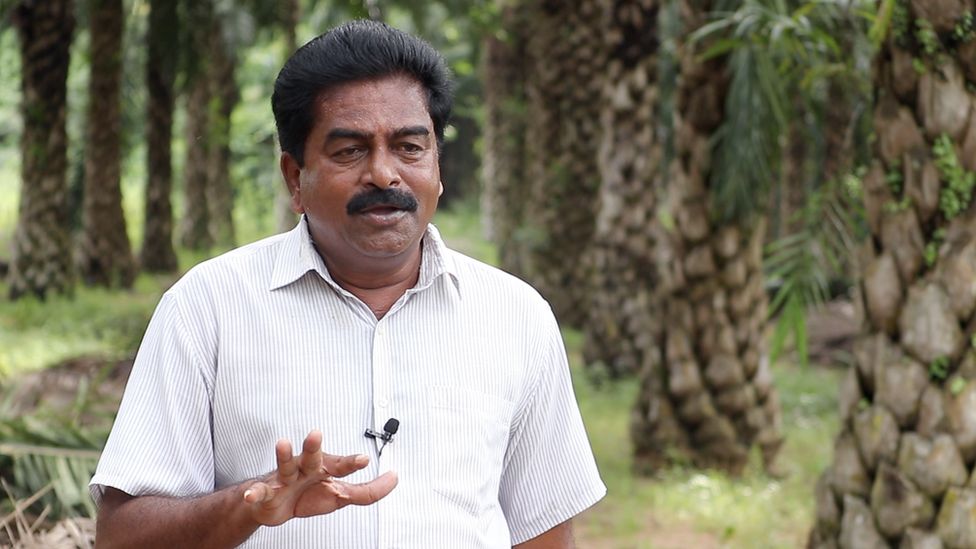
Why palm oil?
India was hit hard when Indonesia in May decided to halt its exports, leading to a surge in cooking oil prices.
To reduce dependence on imports, the federal government last year had launched the Palm Oil Mission, with a budget of 110bn rupees to increase the land under cultivation across 17 states.
States such as Kerala, Karnataka, Assam and Arunachal Pradesh have also been encouraging farmers to grow oil palm.
But no state has made as massive a push as Telangana where farmers are being given 50,918 rupees for each acre by the state and federal governments to acquire saplings, access drip irrigation and grow another crop during the four years it will take to start harvesting the oil palm crop.
The move to palm oil
Before palm oil, Telangana had heavily promoted paddy cultivation.
But a declining demand for rice in states like Jharkhand, Tamil Nadu and Kerala made the state and the federal governments reluctant to buy surplus stocks of rice from Telangana farmers.
The two governments bickered earlier this year after the federal government refused to buy large quantities of parboiled rice at a guaranteed minimum price.
In contrast, analysts expect palm oil to benefit both the farmers and the government.
The crop will increase the state’s agricultural Gross Value Addition (GVA) – the value of agricultural goods and services produced after deducting the cost of raw materials – by 10%, officials at the state’s horticulture department say.
It will also use 25%-30% less water than paddy, reducing the government expenditure on electricity subsidy, says Kranthi Kumar Reddy, general secretary of the National Oil Palm Farmers Association.
“In terms of productivity, more oil can be extracted from palm oil compared to other oil seeds,” says trade analyst Narasimha Murthy. “It’s possible to get 5,000kg per hectare.”
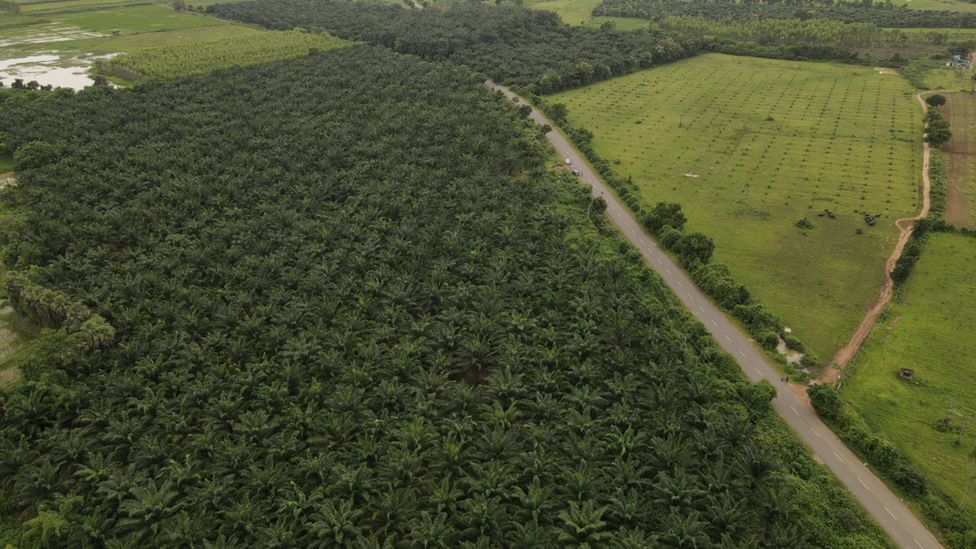
‘Destructive crop’
But farmers’ welfare organisations are sceptical of these plans, particularly the cost of watering a crop that requires expensive lift irrigation all year round.
“The summers in the state are too hot for this crop,” says Ravi Kanneganti, general secretary of independent farmers’ organisation Rythu Swarajya Vedika.
Oil palms need moisture in the air and most of Telangana has dry land that does not receive adequate rainfall, says Dr Ramanjaneyulu, the executive director of Centre for Sustainable Agriculture.
“Telangana spends a lot of money to bring river water to these farm lands through lift irrigation. How long will the government bear the cost of this?” he adds.
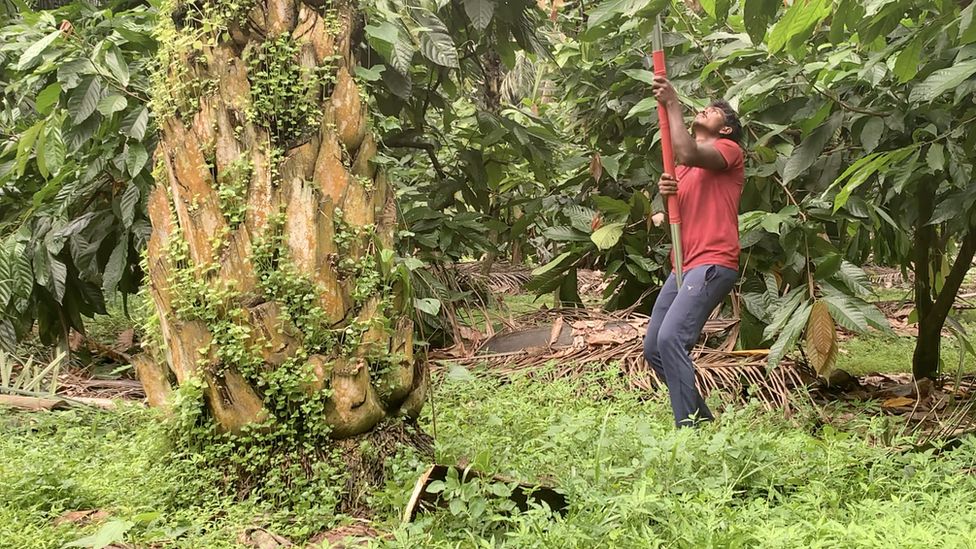
It is also not enough to give subsidies for cultivation. Experts say the government needs to offer a minimum support price (MSP) – a guaranteed minimum price for the produce – to farmers.
Many farmers in Andhra Pradesh, which is currently the country’s largest producer, shifted from crops like rice, coconut and bamboo to oil palm when the federal government first pushed the crop in the 1990s. In the last few years, several have switched back after suffering losses due to the lack of a guaranteed minimum price for their harvest, Mr Reddy says.
Farmers also cite depleting water table, pest attacks and the crop’s inability to withstand extreme weather as reasons for this shift.
With Telangana’s farmers already reeling from heavy losses from paddy, experts say they cannot afford to take on more losses.
Dr Ramanjaneyulu says the state’s decision to focus on palm oil is “impulsive”, keeping only the market in mind.
Slash-and-burn practices linked to palm oil cultivation have been blamed for forest fires and extreme air pollution in several Asian countries.
It’s also common for toxic weed and pest killers to be used at these plantations.
“Like in other countries where palm oil is grown, whenever demand grows and yield decreases, usage of chemicals will certainly go up, causing ecological issues,” Dr Ramanjaneyulu says.
In Indonesia and Malaysia, the rapid expansion of oil palm plantations has decimated vast tracts of the world’s most biodiverse forests, destroying plants and endangering native wildlife.
“Along with potential monetary loss, people in the state may have to bear the repercussions of such environmental issues for years to come,” Dr Ramanjaneyulu says.

Read more India stories from the BBC:
- Where is India’s billionth baby now?
- India glee over Rishi Sunak’s rise to UK leader
- Heat killing many more Indians now: Lancet study
- Why ice climbing is gaining popularity in India
- What causes Delhi’s air pollution?
- Kohli delivers on sporting occasion like no other
- Hundreds enjoy new conjugal visit rooms in India jails


